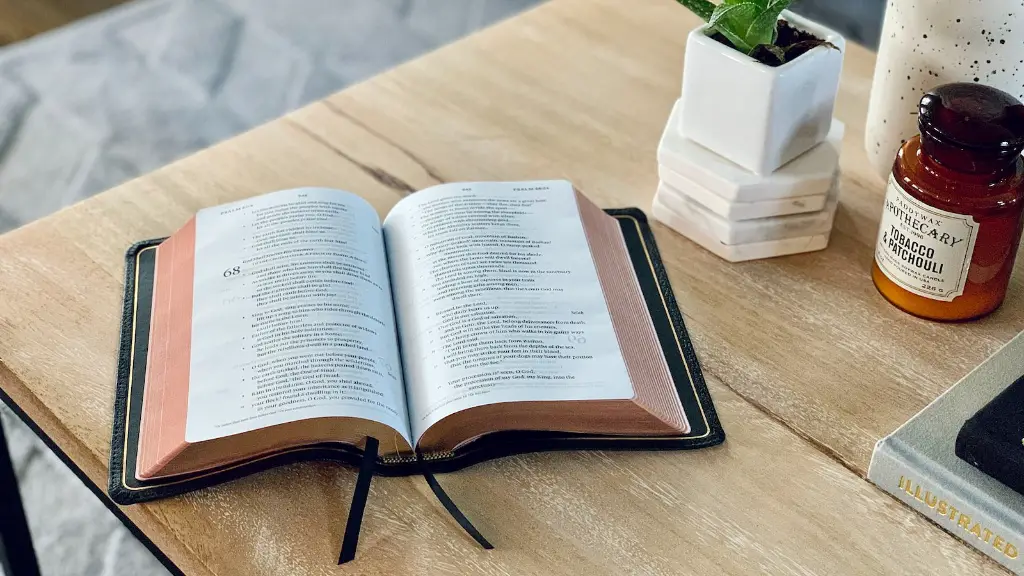Have you ever wanted to start reading the Bible from the beginning but been overwhelmed by the enormity of the task? What exactly is the Bible and how can you best approach it? Whether you are reading for spiritual growth, for academic challenge, or for daily devotion, understanding the Bible is a journey, and having a guide to help will provide valuable insight.
The Bible is a collection of ancient texts that contain revelations, stories, prophecy, and moral instruction. It’s composed of two main sections: the Old Testament and the New Testament. The best place to start is in the New Testament which contains four gospels (Matthew, Mark, Luke, and John), an assortment of letters, and the book of Revelation. Often called the “gospels of grace,” these books focus on the life, ministry, and teachings of Jesus Christ.
Early Christians read the letters of Paul, just as they were written, in reverse order. Beginning with the book of Revelation, then Romans, and then 1 & 2 Corinthians, then Galatians, and finally, Philemon. This plan gives the reader a great overview of Bible doctrine and practice. In addition, it conveys the development of Paul’s thought, reveals the occasion in which each letter was written and provides a clear context for following his argument.
The gospels should come next. Although Matthew, Mark, Luke and John have parallels in the events they record, each has its own unique personality, and approach to covering Jesus’ ministry. They are meant to be read as a whole, rather than jumping sporadically between them. They are supplemented with historical context by Acts which records the spread of the gospel beyond the Jewish settlements of Palestine into the ancient world.
Once the New Testament is finished, the Old Testament can be approached. Due to its size and geographical breadth, it can be daunting for newcomers to the Bible. One way to approach it is by clustering the books into manageable categories, such as the Law, Historical references, and Wisdom/Prophecy.
The Law
The first five books are referred to as “The Law” and are a codified version of the Hebrew religion of the ancient world. These books, named after their authors, are Moses’ books (Genesis, Exodus, Leviticus, Numbers and Deuteronomy). Though these are a valuable historical resource of the Hebrews, these books are first and foremost focused on a set of religious regulations that serve as the foundation of their faith.
Historical References
Books of History (Joshua, Judges, Ruth, 1 & 2 Samuel, 1 & 2 Kings, 1 & 2 Chronicles, Ezra, Nehemiah and Esther) provide first-hand accounts of Jewish leaders, settlements, wars, and daily life. It is important to read these books in order to get a clear timeline of events in order to put the books of Law, Prophecy and Wisdom in context.
Wisdom/Prophecy
The books of Wisdom (Job, Psalms, Proverbs and Ecclesiastes) and Prophecy (Isaiah, Jeremiah, Lamentations, Ezekiel, and Daniel) reflect a different theological perspective than the books Law and History. These books emphasize the ethical and moral requirements of the Hebrew faith. The wisdom literature focuses more on the personal journey of finding a more spiritual and meaningful life.
The prophetic literature often contains the language of judgment, but its purpose is to convict and to encourage true belief and to bring backslidden believers to repentance. It also contains the announcements and descriptions of covenants, God’s promises to his people.
The Gospels of Minor Prophets
The last twelve books of the Old Testament, which are also referred to as the “minor prophets” are prophetic messages that occurred during the divided kingdom and exile period. While these books are shorter in length, they are packed with the prophets’ passionately expressed messages of reproof and encouragement.
The Major Prophets
The Major Prophets (Isaiah, Jeremiah, Lamentations, Ezekiel, and Daniel) are characterized by their length and socio-historical context. Isaiah, for example, speaks of the impending Babylonian captivity, which is about to happen to the Israelites if they do not repent. Jeremiah speaks of the hardening of their hearts and of their subsequent exile as judgment from God.
The Book of Revelation
The Book of Revelation is the last book in the Bible, and is filled with images, prophecies, and warnings. It’s often referred to as the “Apocalypse.” Revelation is full of frightening images and cryptic language, so it is best to read it with an eye on the bigger picture, looking for the major themes and interpretations throughout the book.
Putting It All Together
Working through the Bible in this way can give the reader a better understanding of how the different books build upon each other. Once the reader has worked through the books in the order described above, they will have a general overview of the Bible’s main ideas and story arc from beginning to end. Then, the reader can choose to go back and re-explore any books for more in-depth study.
The Bible is the world’s most important book, and like all great books, it takes time and effort to understand. Reading through the Bible from beginning to end is a great goal, and with a little guidance anyone can begin to understand and appreciate the treasures contained within.

